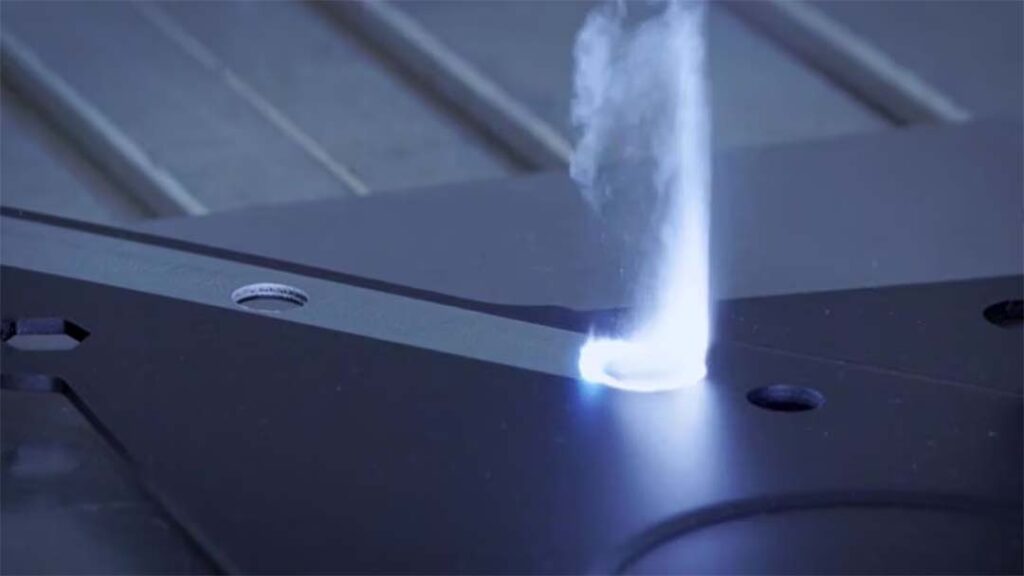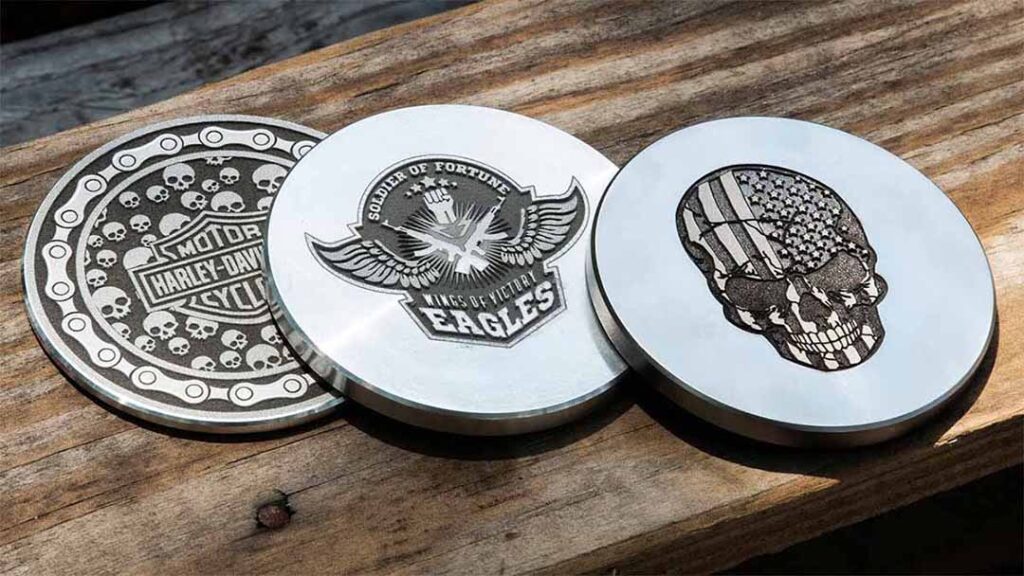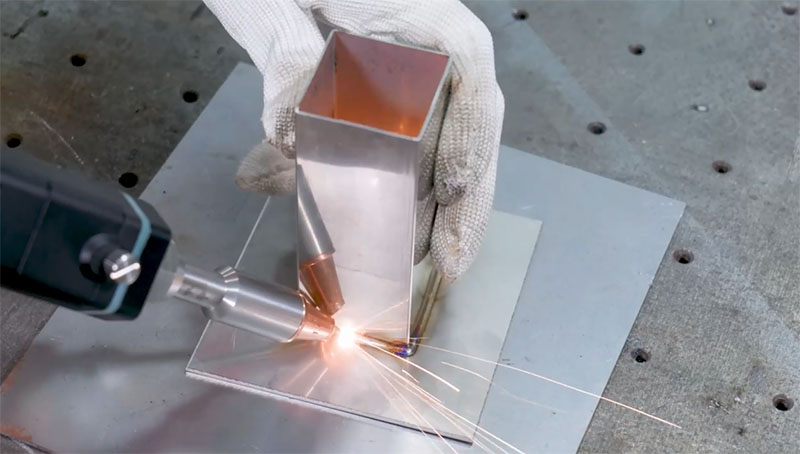Laser welding has a wide range of applications, whether it’s for small and intricate welding tasks or connecting large metal structures. Laser beams are most commonly used in metal material processing, typically including iron sheets, carbon steel, and stainless steel, copper, and aluminum alloys. In the construction industry, laser welding machine for windows is an essential tool.
Products such as doors, windows, security windows, and railings mainly involve steel sheets and tubes with a thickness of less than 2cm. Precise laser cutting and welding processes are used to shape these materials into door and window frames that meet specifications. These frames not only possess a robust structure but also exhibit the unique aesthetics and durability of metal, providing a perfect solution for both safety and decorative requirements in indoor and outdoor spaces.
By utilizing laser welding machine, achieving excellent quality welding door and window in a very short time, without compromising the strength of the weld. Laser welding can be widely applied in various fields, including electronics, automotive components, car body manufacturing, electroplating processes, metal furniture frame, and the production of household appliance components.


Why Use Home Laser Welding Machine?
- Traditional welding methods are prone to issues like porosity and heat cracking, making it challenging to ensure the welding quality of aluminum alloy materials. Additionally, aluminum alloy doors and windows have high aesthetic requirements for welding. Furthermore, traditional argon arc welding is not particularly efficient.
- Laser welding equipment, due to its high welding speed and large depth-to-width ratio, greatly enhances welding efficiency and stability. Therefore, laser welding is widely used in the welding of aluminum alloy doors and windows.
- Laser welding can employ filler wire welding, increasing surface protrusion and reducing internal welding defects such as porosity and cracks. This makes the manufacturing of doors and windows more aesthetically pleasing, significantly improves efficiency, and enhances the longevity and safety performance of doors and windows. Importantly, it can meet the demands of high-end customers.
- Compared to traditional welding methods, Home Laser Welding Machines for aluminum alloy doors and windows use PLC control, effectively improving production efficiency and flexibility. They can weld different steels and metals. It is easy to achieve mechanization and automation, with high welding speed, minimal heat deformation, no welding porosity, and little or no post-welding treatment required.
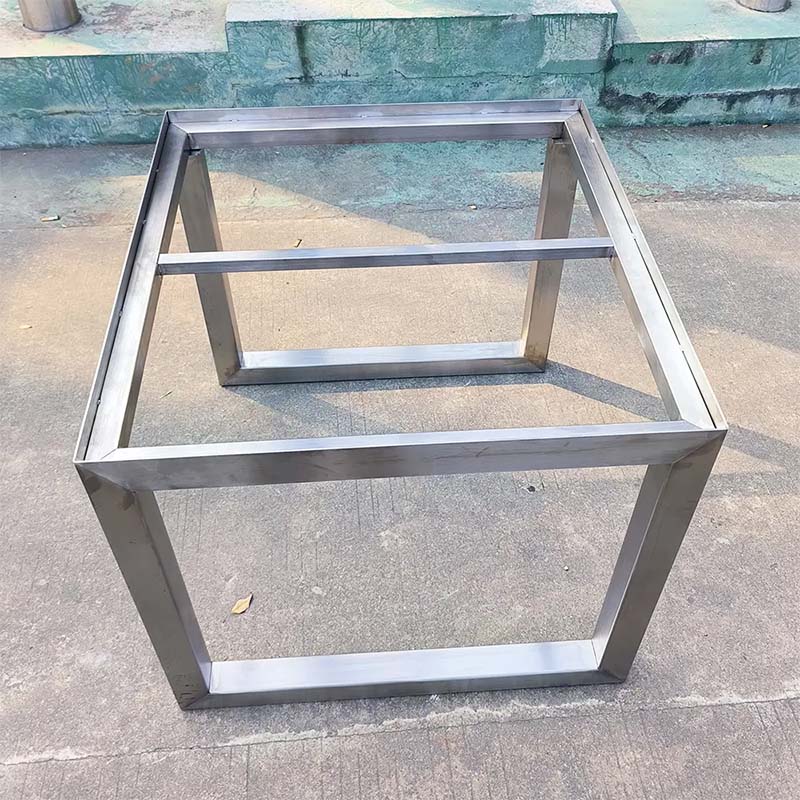

Laser Welding for Windows and Doors
1. High-speed welding for labor and time savings
Laser welding operates at speeds 2-10 times faster than traditional methods, requiring no extensive training and reducing the need for multiple welders.
2. Flexibility for multi-angle welding
The handheld welding gun allows for welding workpiece at various angles, offering exceptional freedom of operation in any position.
3. Space-saving versatility in welding
Without the need for welding tables, it occupies minimal space and can be used for a wide range of welding products, accommodating various workpiece shapes.
4. Cost-effective welding choice
With low energy consumption and minimal maintenance costs, laser welding provides an economically viable welding solution.
5. Aesthetic weld finishes, reducing post-processing
Laser welding technology produces smooth, attractive weld seams with no welding scars, workpiece deformation, or weak joints, thus reducing the need for post-weld grinding and saving time and costs.


Precautions for Laser Welding Aluminum Alloy Windows
Because aluminum alloy is a non-ferrous metal with strong reflectivity to various types of light, laser, being an even more intense beam of light, can cause even more pronounced reflections on its surface. Aluminum alloy also possesses high thermal conductivity. Therefore, when aluminum alloys laser welding, it is crucial to swiftly increase the power density of the laser to prevent reflection or conduction.
Aluminum materials have characteristics of high thermal conductivity and reflectivity. Thus, welding parameters must be chosen according to the specific type and thickness of the aluminum material. Selecting appropriate power, focal length, and focus diameter parameters allows for control of the heat input and the formation of the molten pool during welding, ensuring the desired weld appearance and quality.
Attention must be paid to factors such as beam quality and gas shielding to guarantee welding quality and stability.
1. Pre-weld cleaning: Before welding, it is essential to thoroughly remove any oxidation, rust, and oil residues from the welding joint and wire surface of aluminum alloy doors and windows. This can be achieved through chemical, mechanical, or laser cleaning.
2. Backing plate: Due to the low strength of aluminum alloy at high temperatures, the welded joint metal is prone to collapse during welding. Backing plates are used to support the molten pool and nearby metal, preventing collapse.
3. Alignment: Precise positioning and clamping of door and window components is necessary to ensure they do not move during the welding.
4. Pre-heating: When welding aluminum alloy doors and windows with a thickness typically ranging from 10mm to 15mm, pre-weld heating is required. Different types of aluminum alloys have varying melting points and thermal conductivities, so pre-heating temperatures usually fall between 100°C to 200°C.
5. Post-welding steps: Allow for a cooling period to reduce heat stress.
- Weld seam cleaning: Remove any remaining welding slag and oxides from the weld seam and its surrounding area.
- Passivation treatment: To enhance the corrosion resistance of aluminum alloy doors and windows, consider surface treatment or coatings on the weld seams.
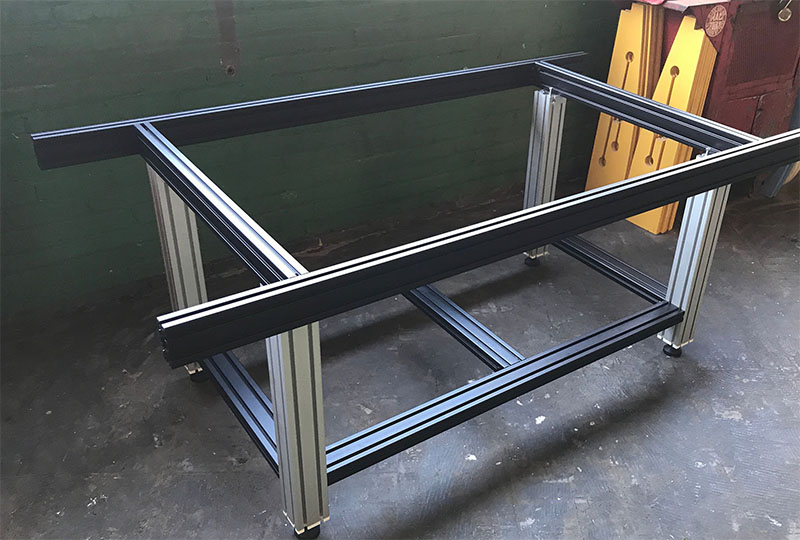

Laser Welding Machine for Aluminum Alloy Frame
DPLASER laser welding machine is chosen for aluminum alloy doors & windows due to its precision welding, wide applicability, high efficiency, automation capabilities, and strong and beautiful welds, making it a preferred choice for manufacturers in various industries.
1. Modular design for exceptional stability
We employ a modular design to ensure the separation of internal components into photonic modules, enhancing the stability of operational performance.
2. Convenient maintenance, minimal downtime
Photonic modules, electronic modules, control units, and drive units can all be directly replaced, upgraded, and maintained at the client’s site, minimizing downtime to the greatest extent.
3. Customization to meet diverse needs
We offer a variety of customization options and component parameters to cater to users’ different processing requirements, ensuring the fulfillment of diverse processing demands
4. Uniform energy distribution of the light spot for a stable processing
Laser welding technology helps reduce welding spatter, thereby providing more stable welding performance.


5. Wide range of applications
Our laser welding systems can be integrated with multi-axis systems, galvanometer scanners, and robotic arms to meet welding processing requirements in various fields, including electronic components, metalworking, medical devices, automotive parts, jewelry, and mechanical equipment manufacturing.
Laser welding machines for door and window manufacturing have a range of applications, particularly in the production of doors and windows made from various materials, such as aluminum, steel, and uPVC (unplasticized polyvinyl chloride).
Frame Welding: Laser welding machines are used to join the frame components of doors and windows. Whether its aluminum, steel, or uPVC frames, laser welding ensures precise and strong connections. This results in durable and long-lasting structures.
Corner Welding: In window and door frames, the corners need to be precisely and securely welded. Laser welding provides clean and aesthetically pleasing corner welds with minimal distortion.
Grid Welding: Some window designs feature decorative grids or muntins. Laser welding is used to attach these grids to the window panes, ensuring a neat and seamless appearance.
Reinforcement Welding: Doors and windows may require reinforcement for added strength and security. Laser welding is employed to attach reinforcement bars or profiles to the frame securely.
Water Drainage Channels: Many windows and doors have built-in water drainage channels to prevent water infiltration. Laser welding ensures leak-proof joints in these critical areas.
Multi-Material Welding: In cases where doors and windows incorporate multiple materials, such as a combination of aluminum and uPVC, laser welding is used to join these materials with precision.
Decorative Element Welding: Laser welding is employed for attaching decorative elements, such as ornamental grilles or decorative panels, to enhance the visual appeal of doors and windows.
Customized Solutions: Laser welding machines offer the flexibility to cater to customized designs and requirements, allowing for the creation of unique and tailor-made doors and windows.
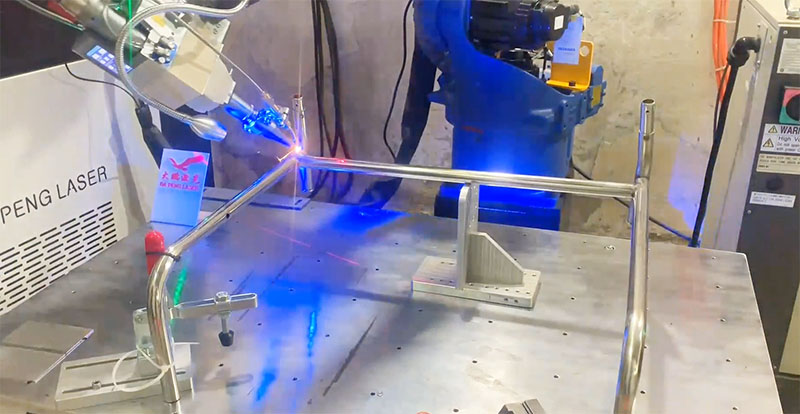

Robotic Laser Welding System
The combination of laser welding machines and robot arms in the manufacturing of aluminum alloy windows brings advantages and vast prospects for development.
- Outstanding Connection Quality: Robotic laser welding machines enable high-quality welding connections. They create a highly stable molten pool, resulting in smooth and clean weld seams with high tensile strength. This eliminates issues like deformation and cracks, not only enhancing the overall quality and durability of aluminum alloy windows but also meeting consumers’ demand for high-quality products.
- Precise Parameter Control: Robotic laser welding machines allow for highly precise control of welding parameters, including welding speed, power, and depth. This ensures the stability and repeatability of the welding process while accommodating workpieces of various shapes and sizes, enhancing production flexibility.
- Improved Production Efficiency: The combination of laser welding robotic with automation and precise control significantly enhances production efficiency. They can work continuously, reducing the need for manual intervention, which helps reduce production costs and increase production speed.
- Energy Savings: Compared to traditional welding methods, laser welding typically requires less heat input, thereby reducing energy consumption. This contributes to improved production sustainability while reducing energy costs.
- Adaptability to Different Workpieces: Robotic laser welding machines can easily adapt to workpieces of various shapes and sizes for aluminum alloy windows, requiring minimal reconfiguration or modification, primarily by adjusting input parameters.
In aluminum alloy window frame welding and welding steel window frames, the integration of laser welding equipment with robots not only enhances product quality but also offers higher production efficiency and flexibility, providing vast prospects for the industry’s future development.
In summary:
The application of laser welding machine for windows manufacturing not only signifies advancements in modern manufacturing techniques but also opens up new possibilities for the construction industry. Its precision and efficiency enable manufacturers to quickly produce more durable and beautiful home products. Furthermore, laser welder holds the potential to reduce manufacturing costs, minimize material wastage, and play a positive role in construction materials.
